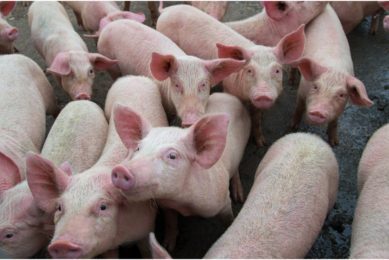China: HP-PRRS evolved gradually from local isolate (corrected)
The highly pathogenic PRRS virus from China appears to have gradually evolved from CH-1a, a local PRRSV isolate.
Chinese researchers, from the Shanghai Veterinary Research Institute, Shanghai, China, reached that conclusion after a surveillance study of the epidemic and an analysis of more than 300 novel highly pathogenic PRRSVs. This was published in Emerging Infectious Diseases, September 2011.
The evolutionary path could be traced through intermediate PRRSV strains. A team of Chinese researchers found that highly pathogenic PRRSV has a further enlarged deletion in nonstructural protein 2 (NSP-2).
Emerging
Highly pathogenic PRRSV first emerged in China and Vietnam almost simultaneously in 2006, and the epidemic focus was in the area between southern China and northern Vietnam.
All highly pathogenic PRRSV isolates share high sequence identity and have the same deletions as the highly pathogenic PRRSV isolated from China or Vietnam. PRRSV can spread through a variety of routes, including direct contact between pigs, droplet contact through nasal secretions, direct contact with saliva and feces, and indirect contact.
Spread
PRRS has spread rapidly around the world through pig sales, semen, and airborne transmission, including from airline passengers who carry the virus on their clothing, shoes, or equipment while traveling. In the global market, any virus emerging in the highly pathogenic form is a threat. The risk of highly pathogenic PRRS spreading to other countries is increasing.
Affected countries include Bhutan, Cambodia, Laos, Myanmar, the Philippines, and Thailand. In eastern and northern Asia, South Korea and Russia were also reported to be affected.
In the genome of the novel highly pathogenic PRRSV mutant, four deletions (two deletions in nonstructural protein 2, one deletion in the 5′ untranslated region, and one deletion in the 3′ untranslated region), and some other point mutations, have occurred, which were markedly different from those found in any other previous virus isolate.











